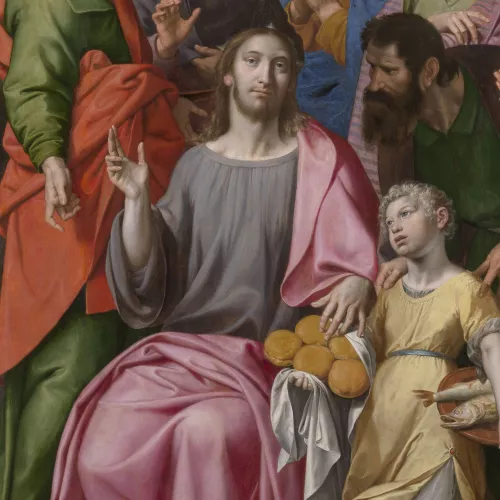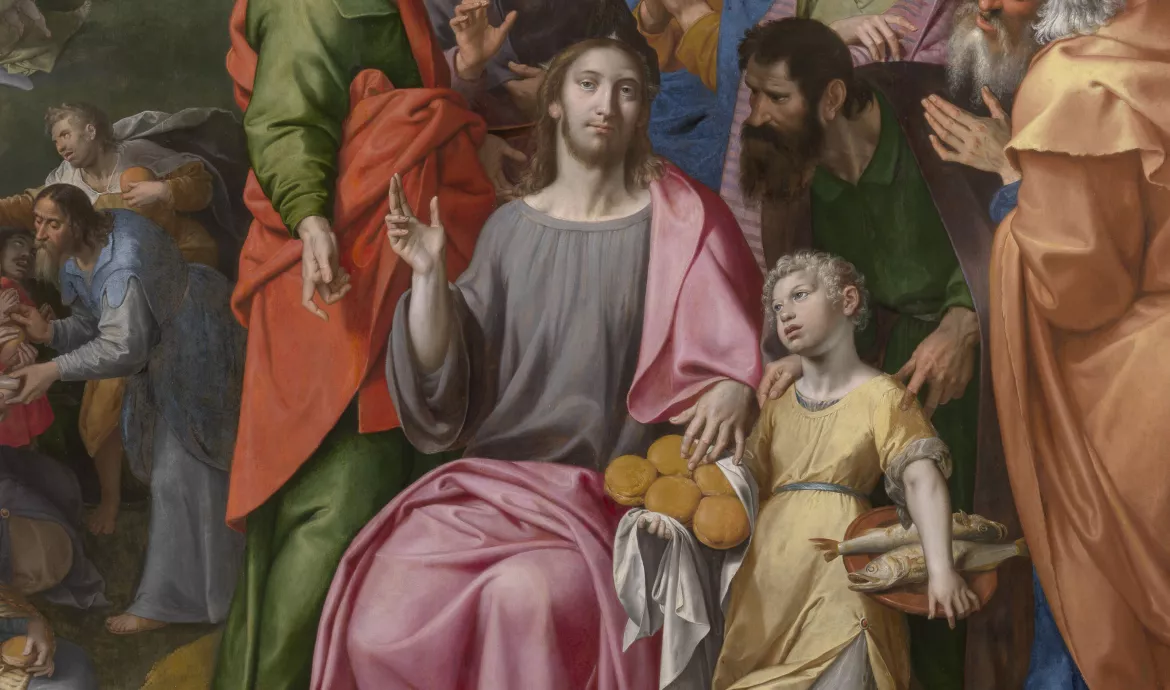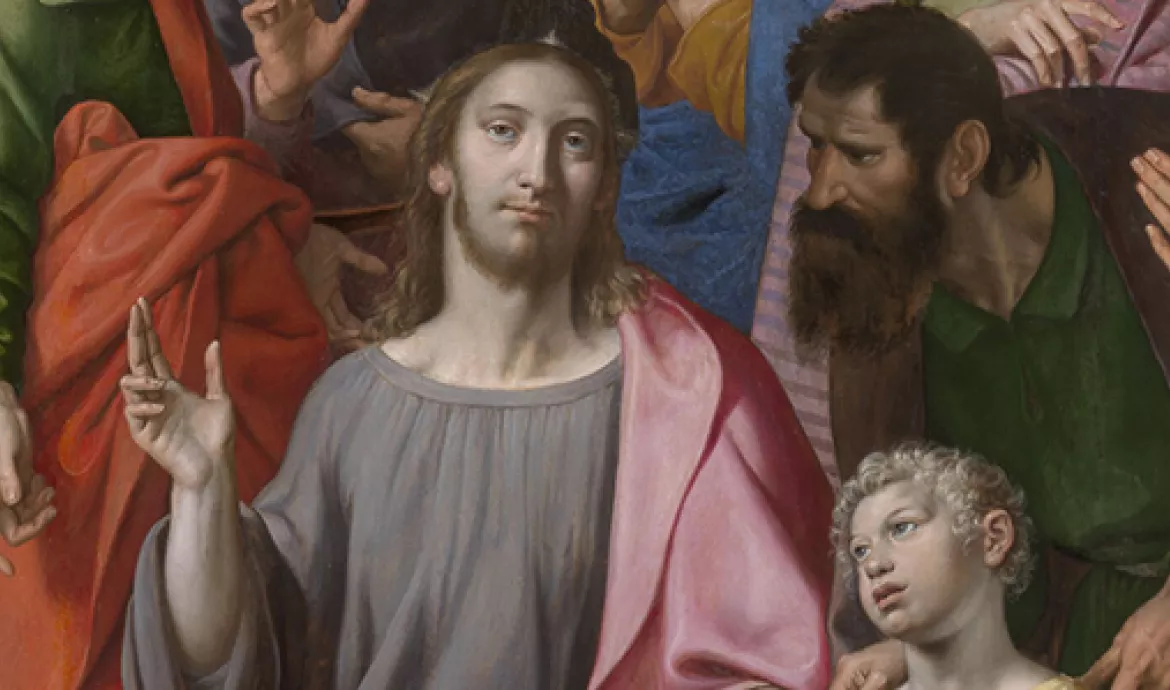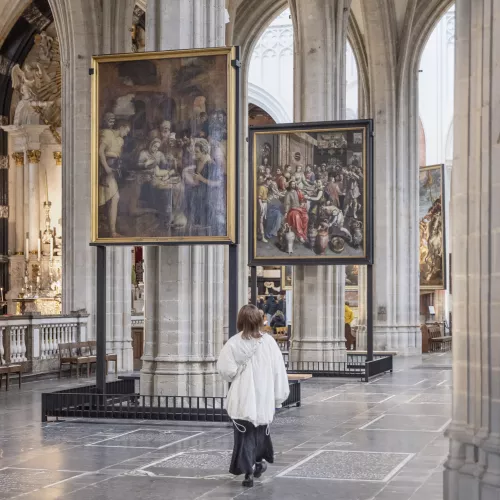This altarpiece comes from the studios of the Francken family. It was commissioned and paid by the Antwerp bakers’ guild in the sixteenth century. Like other crafts, the bakers had their own altar in our Cathedral. Just raise your eyes to the vault above you. Do you recognise the utensil that is used to remove bread from a hot oven? The subject of the painting is also a direct reference to their craft. The young boy in the foreground hands bread to Jesus and his disciples. Subsequently, across the entire painting, bread is distributed to the multitude gathered there. Our Cathedral used to be filled to the brim with altars owned by guilds and crafts. The three other altarpieces in the nave of the church have similar origins. A significant part of the artworks on display at the Cathedral are not only testament to the religious but also to the economic and social activity in our city.
Multiplication of the Loaves and Fishes
What shall I give my children? who are poor,
Who are adjudged the leastwise of the land,
Who are my sweetest lepers, who demand
No velvet and no velvety velour;
But who have begged me for a brisk contour,
Crying that they are quasi, contraband
Because unfinished, graven by a hand
Less than angelic, admirable or sure.
My hand is stuffed with mode, design, device.
But I lack access to my proper stone.
And plenitude of plan shall not suffice
Nor grief nor love shall be enough alone
To ratify my little halves who bear
Across an autumn freezing everywhere.
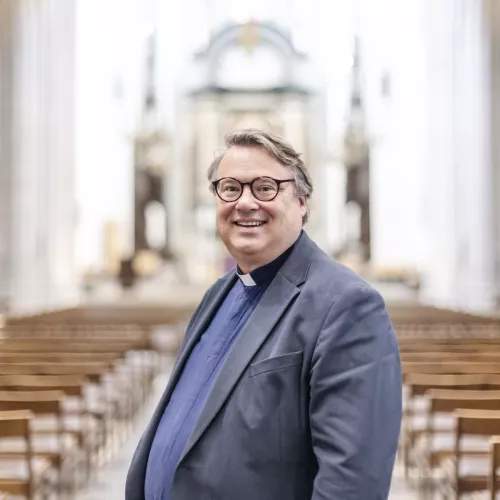
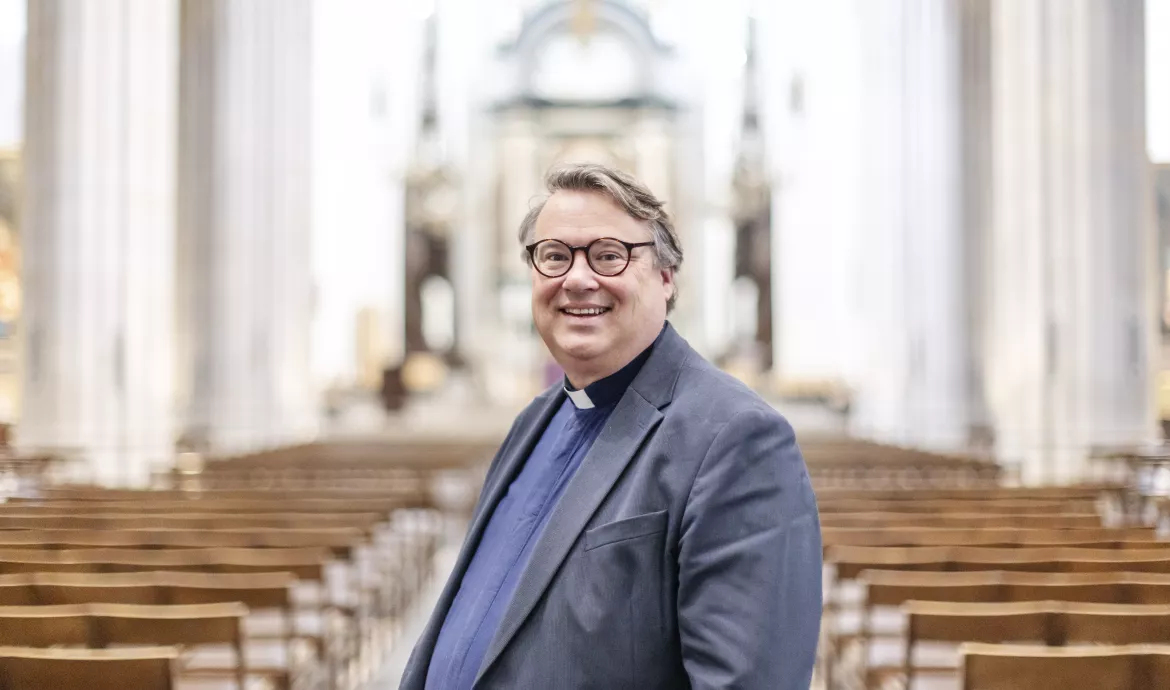
Multiplication of the Loaves and Fishes
Together with the painting Adoration of the Shepherds by Frans Floris de Vriendt this altarpiece belongs to the collection of Antwerp’s Royal Museum of Fine Arts. Both pieces featured in the prestigious exhibition Reunion that lit up our Cathedral for over a decade and saw all remaining altarpieces of the Antwerp guilds returned to the location for which they were made. Other masterpieces are on display in the museum again, such as Quentin Matsys’ world-famous painting Lamentation of Christ.
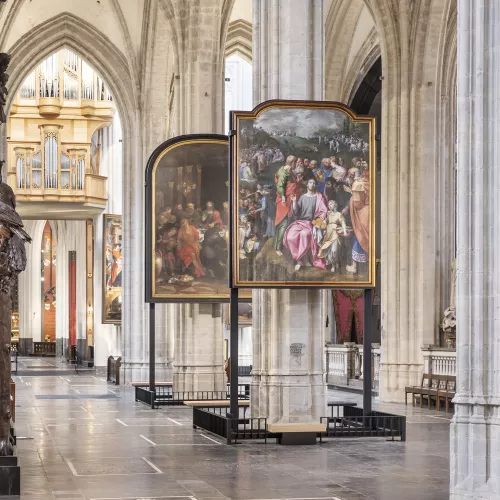
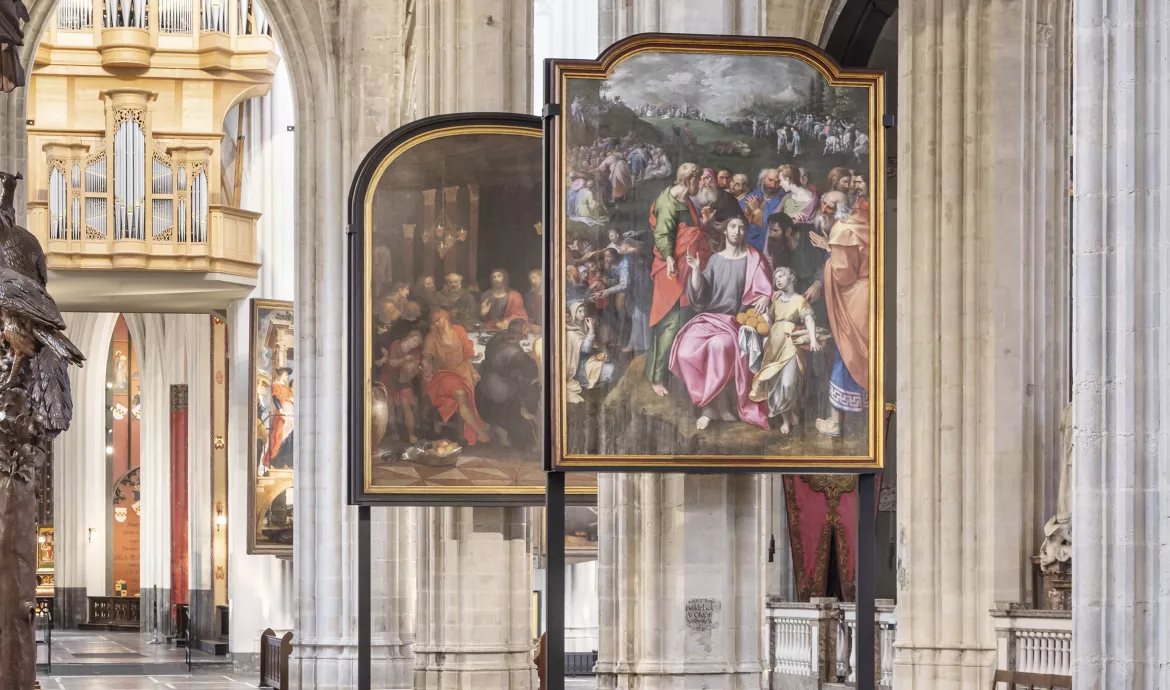
Multiplication of the Loaves and Fishes
Until the end of the eighteenth century, every important craft had its own altar at one of the many pillars. For their altar, the bakers’ guild commissioned Ambrosius Francken to paint the multiplication of the loaves. Jesus has spoken before a crowd of several thousand people but as evening falls it becomes obvious there is no food to feed the masses. Then the boy at the bottom right steps into the foreground carrying five loaves of bread and two fish. This will prove to be enough. The background of the painting shows everyone being fed. However, the viewer’s gaze is continually drawn back to the foreground. Note the penetrating gaze Francken has given the face of Christ. He doesn’t seem at all concerned with the scene in the painting. He appears to take more of an interest in the people viewing the painting, such as the sixteenth-century Antwerpian bakers. Or you.
